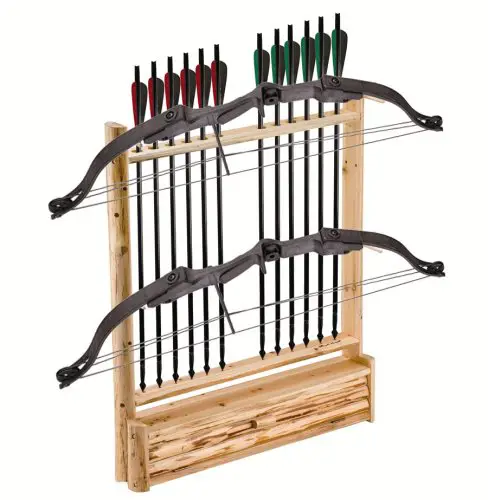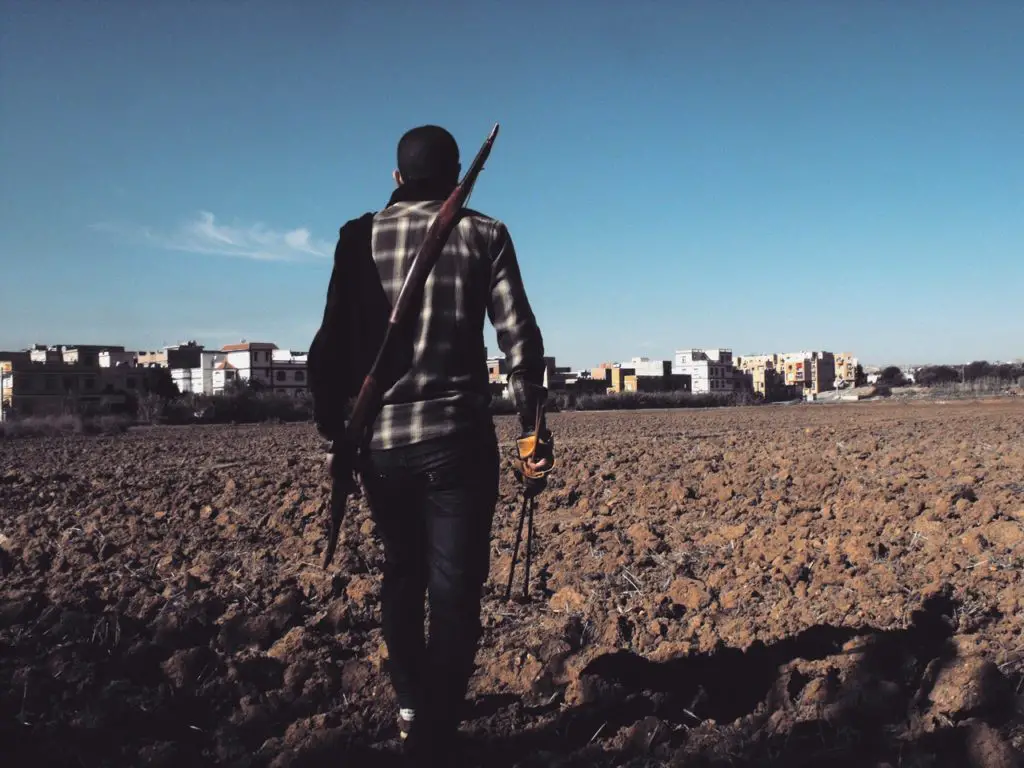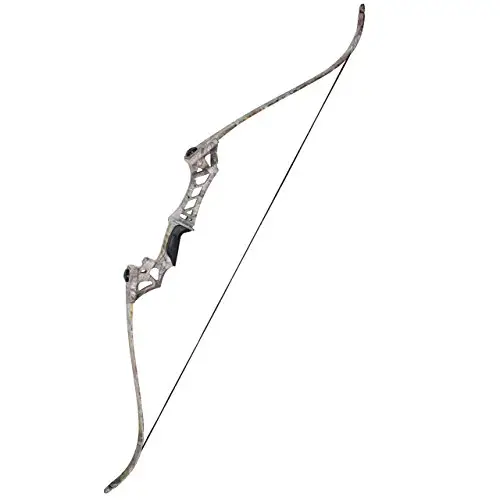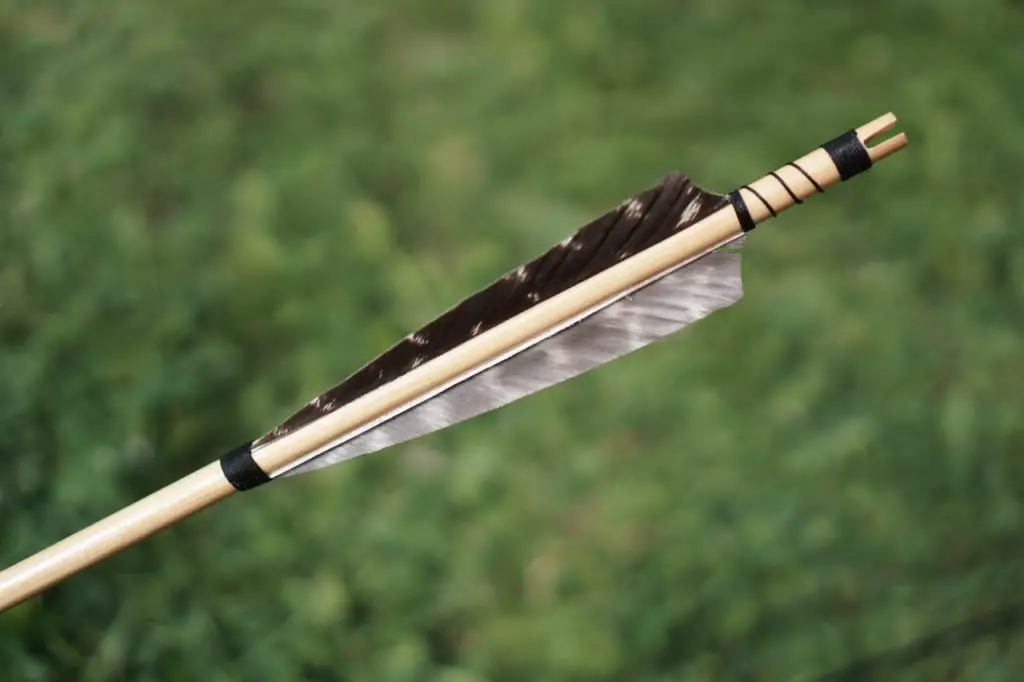As one new to archery, you might have many questions, including how far a recurve bow arrow can go, recurve bow fps, and the benefits of using a recurve bow.
Understanding everything about your fundamental archery tools is essential, whether you are into archery just for fun or for competing.
Unlike other bows, the recurve bow is lighter and, easy to operate. In addition, the transfer of energy to the arrow is more efficient; this results in it moving at a higher speed than some other kinds.
But then, the question remains- What is a recurve bow fps?
How fast Can an Arrow Travel From a Recurve Bow?
The number of feet a recurve bow arrow can cover in a second is dependent on factors including the draw weight of the bow, limb material, draw length, the weight of the arrow, bowstring material, the fletching type on the arrow, the energy profile, and the condition of the wind.

Recurve bow arrows have a speed of up to 250 feet per second or 170mph. A recurve bow’s ideal target shooting range is within 60 to 100 yards. If you desire to use it for hunting and get the best result, the perfect range is about 20 to 40 yards. However, this depends on the archer’s competency and the bow’s draw weight.
Draw weight is a measure of the force needed to draw a bow. Bows that have higher draw weights bring about faster arrow speeds by transmitting more energy to the arrow. What you get from this is a deeper penetration, a smoother trajectory, and a higher chance of pass-through shots when hunting.
Reducing your bow’s draw weight by 10 lbs will lower the recurve bow’s speed by 15–20 fps. For every 10 lbs of draw weight extraction, you will lose 20 fps approximately. And for each inch you take out of your draw length, about 10 fps of arrow speed will be lost.
Of course, these are estimates heavily dependent on a multitude of other factors.
Different kinds of materials are used to design arrows, ranging from aluminum to carbon. The type of material used to create an arrow influences its weight. A difference in the material used means there will be a difference in weight.
The relationship between weight of your shaft is directly proportional to the speed of your arrow. How much an arrow weighs greatly influences the distance it covers per second. The lighter the shaft, the greater the speed of your arrow. For every removal of 5 grains from your arrow’s weight, there will be an increase in speed of approximately 1 fps.
However, when reducing the weight of your arrow, don’t overdo it. Going beneath six grains removal of arrow weight per pound of draw force is not a safe practice. It can cause an increase in the absorption of vibrations in the bow, therefore leading to a challenging experience.
Why FPS Does Not Matter As Much As You Think
Although FPS does make a difference when it comes to accuracy, it is much less important than other factors.
Many new archers make the mistake of chasing high FPS and overextend themselves from a draw weight perspective. It is much better to use a draw weight you can control rather than chasing higher FPS.
You’ll deliver a much more accurate shot if you are using a draw weight within your capabilities.
Below is a video helping you find the right draw weight for you.
Estimated Bow Draw Weight VS FPS
Below is a list of different recurve bow draw weights and their respective speed;
| Draw Weight | Estimated FPS |
| 25 Lb Recurve Bow | 106 fps to 119 fps |
| 30 Lb Recurve Bow | 106 fps to 126 fps |
| 35 Lb Recurve Bow | 135 fps |
| 40 Lb Recurve Bow | 166 fps |
| 45 Lb Recurve Bow | 176 fps |
| 50 Lb Recurve Bow | 175 fps to 183 fps |
| 55 Lb Recurve Bow | 183 fps to 190 fps |
| 60 Lb Recurve Bow | 200 fps |
| 65 Lb Recurve Bow | 283 fps |
| 70 Lb Recurve Bow | 290 fps |
25 lb Recurve Bow FPS
Suppose you have the proper form and the aim for this size of recurve bow; in that case, you can hit your target successfully from 60 to 70 yards from this draw weight. A recurve bow of 25lbs will have a speed of about 106 fps to 119 fps.
30 lb Recurve Bow FPS
Depending on the weight of your arrow, using a recurve bow of 30 lbs to shoot will have a speed within the range of 106 fps to 126 fps. Using non-identical arrows causes you to have a fluctuation in the speed variation.
35 lb Recurve Bow FPS
An average of 134fps is what you will get using a recurve bow with a draw weight of 35 lb to shoot efficiently.
40 lb Recurve Bow FPS
For the majority of amateurs with proper limbs, using a bow weight of 40 lb will have a speed of 166 fps. However, going by the weight Olympic male archers pull, a 40 lb bow will cover a maximum distance of 200 fps.
Recreational Recurve Bows and Olympic recurve bows are not built the same:
45 lb Recurve Bow FPS
Using a swift flight string, a recurve bow with a draw weight of 45 lb will have an average speed of about 176 fps. You can also increase the speed by using a lighter arrow.
50 lb Recurve Bow
A recurve bow of 50 lb will shoot at a speed of 183 fps with an arrow of 550 grain and a swift flight string. On average, a 50 lb recurve bow will shoot at 175 fps to 183 fps.
55 lb Recurve Bow
On average, a 55 lb recurve bow has a recurve bow fps of 183 to 190.
60 lb Recurve Bow
A 60 lb recurve bow with 300 grains arrows will shoot at a speed of 275 fps. Using arrows of 540 grains will shoot at a speed of about 200 fps or slightly above. Using fast flight strings increases the speed by 10 fps.
65 lb Recurve Bow
A 65 lb recurve bow will shoot at about 283 fps. The weight of the arrow will influence the recurve bow fps, just like every other recurve bow.
70 lb Recurve Bow
Using a 70 lb draw weight recurve bow to shoot will cover a distance of 290 fps.
Significance of Speed In Archery
In archery, your arrow speed is something you should put into consideration; but it is not worth losing sleep for. It has been established that faster arrows will give smoother trajectories, which will minimize your margin of error. In contrast, arrows of more weight are usually more reliable and hold energy more efficiently.
Do you know what is more important than speed? Finding balance, and to find balance, you have to first discover what fits you best. It is essential to know your arrow, just like the palm of your hands. Remember, knowing your tools is critical; it is more important than running after high numbers.
Final Thoughts
Earlier in this article, we stated the different factors that affect the speed of your arrows; factors such as draw weight of the bow, limb material, draw length, the weight of the arrow, bowstring material, the fletching type on the arrow, the energy profile, and the condition of the wind.
If you have all the details of your bow and want to get a more specific number check out this calculator that’ll give you the best estimate.
However, there are other factors that determine how fast your recurve bow fps will be. These extra factors are not as significant as the earlier mentioned ones.
The amount of energy transmitted to the arrows might be altered by the type of string you have and any other accessories you are using on it. For illustration, a bowstring of more elastic material can transmit energy to the arrow better, causing the resulting speed to be higher. The weight of the string is just as significant as the weight of the accessories.
Suppose you are considering anything concerning the speed of your arrow. In that case, we suggest that you regard the kinetic energy and not the velocity. Remember, speed is fun, but accuracy is better.
Hopefully, we’ve been able to answer your questions concerning recurve bow fps. Enjoy!
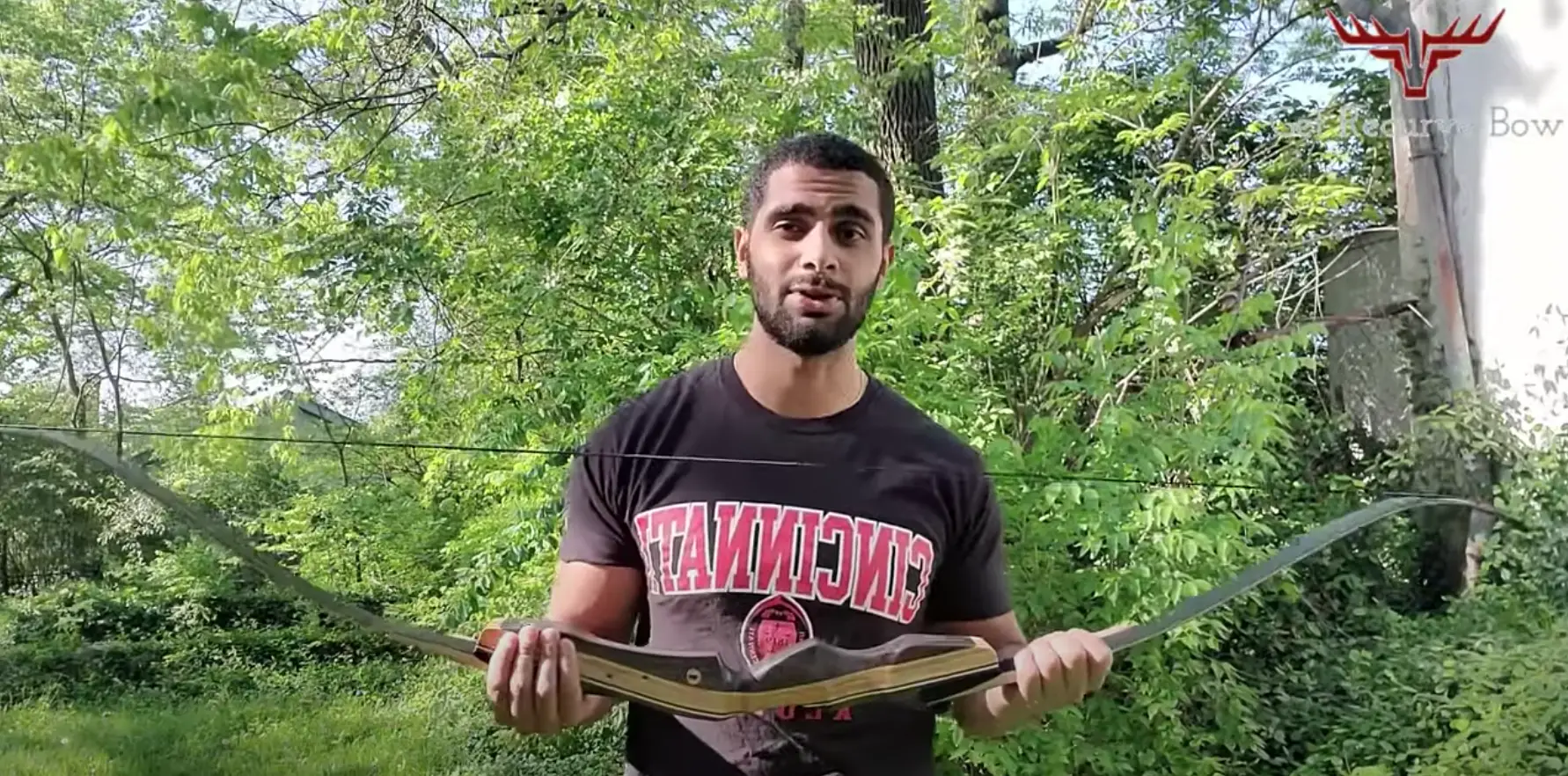
Archery is my hobby & I usually hunt and play on weekends and after work. It’s a passion since I was very young and I love writing about it as well to continuously learn more and share the love of archery with others!

